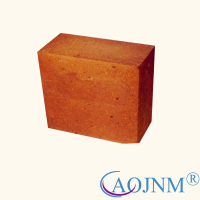Characteristic:
An acid refractory consisting mainly of tridymite, cristobalite, and a small amount of residual quartz and glass phases.
The silica content is 94% or more. The true density is 2.35g/cm3. With acid slag corrosion resistance. Higher high temperature strength. The load softening start temperature is 1620~1670 °C. Long-term use at high temperatures does not deform. The thermal shock stability is low (heat exchange in water for 1~4 times). Natural silica is used as raw material, and an appropriate amount of mineralizer is added to promote the conversion of quartz in the body into scaly quartz. Slowly fired at 1350~1430 °C under a reducing atmosphere. When heated to 1450 ° C, there is about 1.5~2.2% of total volume expansion. This residual expansion will make the joints tight and ensure good air tightness and structural strength of the masonry.
The mineral phase composition of silica bricks is mainly tridymite and cristobalite, as well as a small amount of quartz and vitreous. Quartz, cristobalite and residual quartz have a large change in volume due to crystal form change at low temperature, so the thermal stability of silica brick at low temperature is very poor. During use, slowly heat and cool below 800 °C to avoid cracking. Therefore, it should not be used on a furnace with a temperature change below 800 °C.
Application:
It is mainly used for the partition wall of the carbonization chamber and combustion chamber of the coke oven, the regenerator and sediment chamber of the steelmaking open hearth, the refractory silicon brick material of the soaking furnace, the glass melting furnace and the firing kiln of the ceramics. And other load bearing parts. It is also used for high temperature load-bearing parts of hot blast stoves and acid flat furnace tops.















